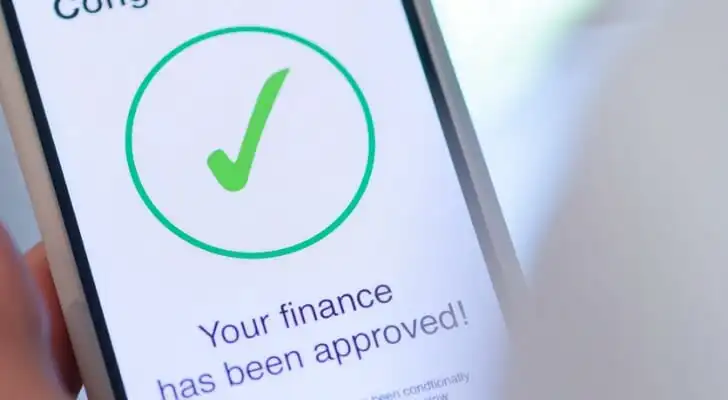If you’re a business owner looking for a loan, your lender will be looking for your solvency ratio. Of course, if you have a startup and are new to running a business, you may not know what a solvency ratio is – but your lenders are going to be monitoring it carefully. The health of your solvency ratio will likely determine whether you get a business loan. Building business credit isn’t always straightforward but it can be important if you need to borrow to fund business activity. You can work with a financial advisor to help you create a financial plan and help put your credit on track.
What Is a Solvency Ratio?
It’s a math equation or formula that determines whether a business’s cash flow is flowing steadily enough so that the company can pay back any money it borrows. (You’ve probably heard business folks ask questions like, “Is your business solvent?” Well, a solvency ratio answers that question.)
A lender looks at the business owner’s liabilities and assets and how the assets are depreciating and ultimately decides whether this business’s solvency ratio is financially robust or weak. If it’s strong, your business will probably get the loan and if it’s weak, it probably won’t – or the terms of the loan won’t be very good, such as your being saddled with a high-interest rate.
The solvency ratio is an imperfect way for a lender to determine the ability of a business to pay off a debt. For instance, it doesn’t take into account an existing line of credit that you might use to pay down debt or stocks you might sell to pay off a debt. But for better or worse, lenders like to know a business’s solvency ratio.
How to Calculate Your Solvency Ratio
Lenders will do this when they analyze your balance sheets; you won’t have to crunch the numbers. But you may want to know how to calculate your business’s solvency ratio, so your expectations are in line with whether you’re likely to get a business loan. First, a warning that this is about to get math-heavy, but if you want to calculate it, there are four main types of solvency ratios that lenders look at.
1. Interest Coverage Ratio
Can your company handle the interest payments on debt? That’s what the interest coverage ratio determines.
- The math: Interest coverage ratio=EBIT/Interest Expenses. (EBIT is Earnings Before Interest and Taxes)
- The answer you’re looking for: Some lenders like to see the number 2, but more prefer to see 3 or higher. For instance, if your company’s earnings before interest and taxes are $300,000 and you will owe $50,000 in interest, then your interest coverage ratio would be 6. In this case, your business shouldn’t have a problem paying off this debt.
2. Debt-to-Assets Ratio
Who owns what? This ratio looks at how much of your business is owned by the people your company owes money to, versus how much of the company is owned by its shareholders.
- The math: Debt-to-Assets Ratio=Assets/Debt
- The answer you’re looking for: If you do the math and wind up with a 1 or less, that’s what lenders like to see. If your number is less than a 1, you have more assets than debts and your company is probably a pretty good credit risk.
3. Equity Ratio
How healthy is your company? It is mostly financed by equity or by debt? That’s what lenders want to know when they look for your company’s equity ratio.
- The math: Equity Ratio=Total Shareholder Equity/Total Assets
- The answer you’re looking for: You’ll looking for a percentage in this case, and the higher the percentage, the better. If your math shows that you have, say, 80% or more, a lender will be pretty pleased. That would mean 20% of your company has debt. When you have 50% or less, that’s when a lender gets uncomfortable. You have a lot of debt and are considered highly leveraged.
4. Debt-to-Equity Ratio
How much debt are you using, to run your business, versus your own equity? It can sound awfully similar to the equity ratio, but as you’ll see, the math is a little different.
- The math: Debt to Equity Ratio=Outstanding Debt/Equity
- The answer you’re looking for: You’re looking for a number lower than 1. Let’s say that your business has $100,000 in shareholder equity, and you have $30,000 in liabilities. If that were the case, you would divide $30,000 by $100,000, and you’d get 0.3. A lender would probably be pretty happy with that number.
A Word About Liquidity Ratios
Liquidity ratios are often mentioned in the same breath as solvency ratios because those, too, measure a company’s health and like solvency rates, there are a lot of different kinds of liquidity ratios. In a liquidity ratio’s case, lenders are looking at the company’s short-term health. Ideally, you want both ratios to be healthy and strong, but you especially want the solvency rate to look appealing.
Lenders tend to look at liquidity ratios carefully with loans, especially if they are considered high-risk. They want to know how much cash you have on hand, to pay the loan back if you struggle to do so. Do you have cash? Inventory to sell? But, at least in theory, the lender may not care as much that your business’s liquidity ratios aren’t super strong if the solvency ratios look appealing.
The Bottom Line
Solvency ratios are probably not something you think about often, especially if you’re new to running a business, but lenders are thinking about them. It’s a good idea to understand them, even if you aren’t currently in the market for a loan. If you analyze your solvency ratios and discover that they aren’t in good shape, it may motivate you to improve your company’s financial health. That’s good for your business, whether you someday want to get a loan or not.
Tips for Building Credit
- Building your credit as an individual or a business can be time-consuming and, at times, confusing. It’s not always straightforward in order to maximize your results, other than paying your bills on time. A financial advisor can help you create a full financial plan, that includes how you can maximize your ability to qualify for more credit. Finding the right financial advisor doesn’t have to be hard. SmartAsset’s free tool matches you with up to three financial advisors who serve your area, and you can interview your advisor matches at no cost to decide which one is right for you. If you’re ready to find an advisor who can help you achieve your financial goals, get started now.
- Business credit can be even more difficult to build credit because there isn’t as clear-cut of a way to do so. You can learn more by reading our article on how you can establish and build your business’s credit.
Photo credit: ©iStock.com/MStudioImages, ©iStock.com/courtneyk, ©iStock.com/kate_sept2004


